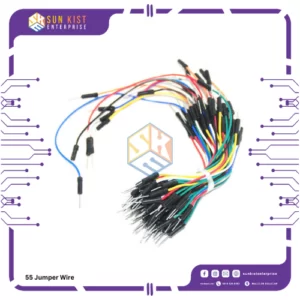Description
A **variable capacitor**, also known as a **variable air capacitor**, is an electrical component used to vary the capacitance in an electronic circuit. It consists of two conductive plates separated by an insulating material, and the capacitance value can be adjusted by changing the distance between the plates. Here are some key points about variable capacitors:
1. **Capacitance Adjustment:** Variable capacitors are designed to have an adjustable capacitance value. By changing the distance between the plates, the effective area of the plates that overlap can be varied, which, in turn, changes the capacitance. This adjustment is typically done manually with a knob or screw.
2. **Dielectric Material:** The insulating material between the plates, known as the dielectric, plays a crucial role in determining the variable capacitor’s performance. Common dielectrics used include air, mica, plastic, or ceramic materials.
3. **Tuning Capacitors:** Variable capacitors are commonly used in radio receivers and transmitters as tuning capacitors. By adjusting the capacitance, the resonance frequency of a circuit can be tuned to a specific frequency, allowing the receiver or transmitter to receive or transmit on different channels.
4. **Frequency Adjustment:** In many applications, variable capacitors are used to adjust the operating frequency of a circuit. This is important in applications like oscillators, filters, and phase-locked loops.
5. **Antenna Tuning:** Variable capacitors can also be used for fine-tuning the impedance matching of antennas in radio and wireless communication systems.
6. **Construction:** Variable capacitors can be found in various physical forms. Common types include rotary capacitors, where the plates rotate, and trimmer capacitors, where the plates move linearly. The choice depends on the specific application and space constraints.
7. **Capacity Range:** The capacitance range of a variable capacitor can vary from a few picofarads (pF) to several hundred picofarads or more.
8. **Knob or Screw Adjustment:** In many cases, a knob or screw is used to adjust the capacitance. Turning the knob or screw changes the plate spacing, allowing you to fine-tune the capacitance.
9. **Linearity:** Variable capacitors are typically designed to have linear or nearly linear capacitance adjustment characteristics, ensuring that the change in capacitance is proportional to the physical adjustment.
10. **Quality Factor (Q):** The quality factor of a variable capacitor is a measure of its energy efficiency and how much energy is stored and dissipated during operation. High-quality variable capacitors have a high Q-factor.
11. **Applications:** Variable capacitors find applications in various electronic circuits, including analog radio and television tuners, amateur radio transceivers, and high-frequency oscillators.
Variable capacitors are essential components in many RF (radio frequency) and high-frequency electronic circuits, allowing precise adjustment of capacitance to optimize the performance of the circuit at different frequencies.






Reviews
There are no reviews yet.